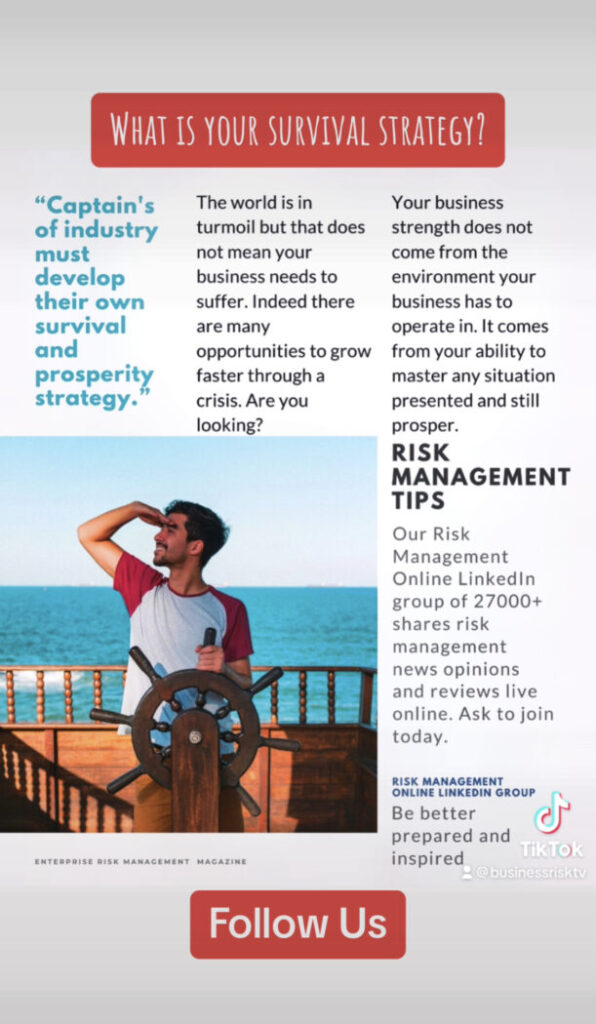Is M2 money supply in U.S. increasing and if so what does it mean to you?
Yes, the M2 money supply in the U.S. has increased over the last 6 months. The year-over-year increase in January 2025 was reported at 3.9%, and in February 2025 at 3.88%. This indicates that the amount of liquid money in the U.S. economy has been expanding.
Is the increase in M2 money supply significant?
The significance of the recent increase in the U.S. M2 money supply over the last six months is debatable and depends on the context and what you’re comparing it to. Here’s a breakdown of why:
Arguments for it being moderately significant:
- Reversal of Contraction: This increase follows a period in 2023 and early 2024 where the M2 money supply actually contracted year-over-year. This period of contraction was the largest drop seen since the Great Depression. Therefore, the current growth represents a significant turnaround from that trend.
- Year-over-Year Growth: The year-over-year growth rate in February 2025 was 3.88%. While not exceptionally high historically, it is positive and a considerable shift from the negative growth rates experienced in the previous year. This suggests a move away from monetary tightening.
- Consistent Upward Trend: The month-over-month increases over the last six months indicate a sustained period of expansion in the amount of liquid money in the economy.
- Potential Inflationary Pressure (with a lag): Historically, rapid increases in money supply have been linked to inflationary pressures, although the relationship isn’t always direct or immediate. Some economists believe that the recent growth could contribute to inflation in the future, although others note that the relationship is “long and variable.”
Arguments for it being less significant or within a moderate range:
- Lower than Long-Term Average: The current year-over-year growth rate of 3.88% is still lower than the long-term average M2 growth rate in the U.S., which is around 6.86%. This suggests that while it’s growing, it’s not growing at an exceptionally rapid pace compared to historical norms.
- Moderate Month-over-Month Increases: While positive, the month-over-month increases have been relatively moderate, generally under 0.5%. This indicates a gradual rather than a sudden surge in money supply.
- Still Below Post-Pandemic Peaks: The M2 money supply reached very high levels during the COVID-19 pandemic. While the recent increase is notable, it hasn’t pushed M2 back to those peak growth rates.
- Focus on Broader Economic Context: The significance of M2 growth needs to be considered alongside other economic indicators like GDP growth, inflation, unemployment, and interest rates. A moderate increase in M2 might be seen as supportive of economic growth if inflation remains under control.
The increase in the U.S. M2 money supply over the last six months is moderately significant primarily because it marks a clear end to a period of contraction and indicates a return to positive year-over-year growth. However, its significance is tempered by the fact that the growth rate is still below the historical average and the month-over-month increases have been gradual.
The global economy is a complex and interconnected system, with money supply playing a crucial role in its functioning. The amount of money in circulation, or the money supply, has a significant impact on various aspects of the economy, including inflation, interest rates, and economic growth. In this article, we will explore the benefits of a higher money supply for businesses and consumers, focusing on the effects of M2 money supply on the global economy.
What is M2 Money Supply?
M2 money supply is a broad measure of the money supply that includes all currency in circulation, checking account deposits, and most savings accounts. It is a key indicator of the overall liquidity in the economy and is closely monitored by central banks and economists.
The Benefits of a Higher M2 Money Supply
A higher M2 money supply can have several benefits for businesses and consumers. One of the primary benefits is that it can stimulate economic growth. When there is more money in circulation, people have more money to spend, which can lead to increased demand for goods and services. This increased demand can encourage businesses to invest in new equipment and hire more workers, leading to job creation and economic expansion.
Another benefit of a higher M2 money supply is that it can help to reduce unemployment. When businesses are expanding and hiring more workers, the unemployment rate tends to decline. This can lead to increased consumer confidence and spending, further stimulating the economy.
A higher M2 money supply can also help to reduce interest rates. When there is more money available in the economy, the cost of borrowing money tends to decrease. This can make it easier for businesses to invest in new projects and for consumers to make large purchases, such as homes or cars.
The Relationship Between M2 Money Supply, Cryptocurrencies, and the S&P 500
To better understand the impact of M2 money supply on the global economy, it is important to consider its relationship with other asset classes, such as cryptocurrencies and the S&P 500.
M2 Money Supply and Cryptocurrencies
Cryptocurrencies are a relatively new asset class that has gained significant popularity in recent years. They are digital or virtual currencies that use cryptography for security. Cryptocurrencies are not backed by any government or central bank, and their value is determined by supply and demand.
The relationship between M2 money supply and cryptocurrencies is complex and multifaceted. Some economists argue that a higher M2 money supply can lead to increased investment in cryptocurrencies. This is because investors may seek alternative assets to hedge against inflation, and cryptocurrencies can be seen as a safe haven asset.
However, others argue that the relationship between M2 money supply and cryptocurrencies is not as clear-cut. They point out that cryptocurrencies are still a relatively new and volatile asset class, and their value can be influenced by a variety of factors, including regulatory developments, technological advancements, and market sentiment.
M2 Money Supply and the S&P 500
The S&P 500 is a stock market index that tracks the performance of 500 of the largest companies in the United States. It is widely regarded as a benchmark for the overall health of the U.S. economy.
The relationship between M2 money supply and the S&P 500 is also complex. Historically, there has been a positive correlation between the two. This means that when M2 money supply increases, the S&P 500 tends to also increase. This is because a higher money supply can lead to increased economic growth and corporate profits, which can boost stock prices.
However, the relationship between M2 money supply and the S&P 500 is not always linear. Other factors, such as interest rates, inflation, and geopolitical events, can also influence stock prices.
Does an Increase in M2 Result in Increased Business Activity on the High Street?
The high street is a term used to refer to the main shopping streets in towns and cities. It is home to a variety of businesses, including retail stores, restaurants, and cafes.
The relationship between M2 money supply and business activity on the high street is complex and multifaceted. In theory, a higher M2 money supply should lead to increased consumer spending, which would benefit high street businesses. However, the reality is often more nuanced.
Several factors can influence the impact of M2 money supply on high street businesses. These include the overall economic climate, consumer confidence, and the availability of alternative shopping options, such as online shopping.
In addition, the specific mix of businesses on the high street can also play a role. Businesses that sell essential goods and services, such as groceries and pharmacies, may be less affected by fluctuations in M2 money supply than businesses that sell discretionary items, such as clothing and electronics.
How to Take Advantage of an Increase in M2 Money Supply to Grow Your SME Business
If you are an SME business owner, there are several things you can do to take advantage of an increase in M2 money supply.
-
Invest in Marketing and Advertising: When consumers have more money to spend, they are more likely to make discretionary purchases. Investing in marketing and advertising can help you reach new customers and increase sales.
-
Expand Your Product or Service Offerings: If you can identify new products or services that are in demand, you can expand your business and capture a larger share of the market.
-
Improve Your Customer Service: Providing excellent customer service can help you retain existing customers and attract new ones.
-
Invest in Technology: Technology can help you improve your efficiency and productivity, which can lead to increased profitability.
-
Offer Discounts and Promotions: Offering discounts and promotions can attract new customers and encourage existing customers to spend more.
-
Build Strong Relationships with Your Suppliers: Building strong relationships with your suppliers can help you secure better deals and ensure that you have the inventory you need to meet demand.
-
Monitor Your Cash Flow: It is important to monitor your cash flow carefully to ensure that you have the financial resources you need to grow your business.
-
Diversify Your Revenue Streams: Diversifying your revenue streams can help you reduce your risk and ensure that your business is more resilient to economic downturns.
-
Stay Informed About Economic Trends: Staying informed about economic trends can help you make informed decisions about your business.
By following these tips, you can take advantage of an increase in M2 money supply to grow your SME business.
The M2 money supply is a complex and important economic indicator. It can have a significant impact on businesses and consumers. By understanding the relationship between M2 money supply and other economic factors, you can make informed decisions about your business and financial planning.
What are implications for the rest of the world of U.S. increased M2 over last 6 months
The increase in the U.S. M2 money supply over the last six months has several potential implications for the rest of the world, though the exact magnitude and direction of these effects are complex and subject to ongoing debate among economists. Here are some key implications:
1. Potential for Increased Global Inflation:
- Transmission of Inflation: A larger pool of U.S. dollars could, theoretically, lead to increased demand for goods and services globally. If global supply cannot keep pace with this increased demand, it could contribute to inflationary pressures in other countries. This is particularly relevant for countries with strong trade ties to the U.S. or those whose currencies are closely linked to the dollar.
- Import Prices: If the increased M2 in the U.S. eventually leads to higher inflation there, it could translate to higher prices for U.S. exports, impacting import costs for other nations.
- Commodity Prices: As the U.S. dollar is the dominant currency for pricing many global commodities, an increase in the dollar supply (even if not immediately inflationary in the U.S.) could, over time, contribute to higher commodity prices in local currencies worldwide.
2. Impact on Exchange Rates:
- Dollar Depreciation (Potential): Generally, an increase in the supply of a currency can lead to its depreciation relative to other currencies. If the recent increase in M2 is perceived as inflationary or as a loosening of monetary policy in the long run, it could put downward pressure on the U.S. dollar’s exchange rate.
- Impact on Export Competitiveness: A weaker dollar would make U.S. exports cheaper for buyers in other countries, potentially increasing U.S. export volumes and impacting the competitiveness of domestic industries in those countries. Conversely, U.S. imports would become more expensive.
- Currency Fluctuations and Volatility: Significant changes in the U.S. M2 and the dollar’s value can contribute to volatility in global currency markets, creating uncertainty for businesses engaged in international trade and investment.
3. Effects on Global Financial Markets:
- Capital Flows: An increase in U.S. M2 could influence global capital flows. If investors anticipate higher inflation or lower real returns in the U.S., they might seek investment opportunities in other markets, potentially leading to increased capital inflows in some countries and outflows in others.
- Interest Rates: U.S. monetary policy, which can be influenced by M2 levels, has a significant impact on global interest rates. If the increase in M2 signals a more accommodative stance, it could keep U.S. interest rates lower for longer, potentially influencing borrowing costs and asset valuations globally. Conversely, if it’s seen as a precursor to future tightening to combat inflation, it could lead to expectations of higher global interest rates.
- Asset Prices: Changes in U.S. liquidity and interest rates can affect asset prices worldwide, including stocks, bonds, and real estate. Increased U.S. M2 could initially support higher asset prices globally due to increased liquidity and investor sentiment, but this could be reversed if inflation concerns rise.
4. Implications for Developing Economies:
- Debt Burden: Many developing countries hold debt denominated in U.S. dollars. A depreciation of the dollar could ease their debt burden in local currency terms. However, higher U.S. inflation leading to higher global interest rates could increase their debt servicing costs.
- Trade Dependence: Developing economies heavily reliant on exports to the U.S. could see increased demand if the higher M2 translates to stronger U.S. consumer spending. However, they would also face higher import costs if U.S. inflation rises.
- Financial Stability: Emerging markets can be particularly vulnerable to capital flow volatility caused by shifts in U.S. monetary policy and liquidity conditions.
5. Influence on Other Central Banks:
- Policy Responses: Other central banks will closely monitor the U.S. M2 growth and its impact on inflation and exchange rates. They may need to adjust their own monetary policies in response to maintain price stability and manage their exchange rates. This could involve tightening or loosening monetary policy, intervening in currency markets, or adjusting capital controls.
- Coordination Challenges: Divergent monetary policy responses among major central banks due to varying domestic conditions and interpretations of U.S. M2 growth could lead to increased global economic and financial instability.
Important Considerations:
- Velocity of Money: The actual impact of increased M2 depends on the velocity of money – how quickly that money circulates through the economy. If the velocity remains low, the inflationary impact might be muted.
- Global Economic Conditions: The effects of U.S. M2 growth will also be shaped by the overall state of the global economy, including growth rates, supply chain dynamics, and geopolitical factors.
- Federal Reserve Actions: The U.S. Federal Reserve’s response to the increased M2 will be crucial. If the Fed takes steps to manage inflation expectations and potentially tighten monetary policy in the future, it could offset some of the inflationary pressures and exchange rate effects.
The recent increase in the U.S. M2 money supply has the potential to create ripple effects across the global economy, primarily through inflation, exchange rates, and financial market channels. However, the precise nature and magnitude of these implications are uncertain and will depend on a multitude of interacting factors and the responses of policymakers worldwide. Close monitoring of these developments is essential for businesses, investors, and governments globally.
M2 in U.S. is increasing. Increasing M2 is another factor that points to higher inflation in U.S. and worldwide. How central banks and commercial banks react to higher inflation is political as much as economics. Business leaders On The High Street should be reacting now to the change from 2024 where there was an enormous contraction in money supply to a lot more money sloshing around worldwide economy and this fact’s impact on the economy and their business in particular.
Get help to protect and grow your business
Find out more about our Business Risk Management Club
Subscribe for free business risk management tips risk reviews and money saving ideas
Read more business risk management articles and view videos for free

Read more articles and view videos:
-
Benefits of increased m2 money supply for sme business growth strategies
-
How does higher money circulation help small businesses increase revenue
-
Advantages of expansionary monetary policy for local high street businesses
-
Best ways for small business owners to capitalize on rising m2 money supply
-
Understanding the impact of increased money supply on consumer spending for small retailers
Relevant hashtags :
-
#M2MoneySupply
-
#SmallBusinessGrowth
-
#EconomicImpact
-
#HighStreetBusiness
-
#MoneyInCirculation
Direction Of M2 Money Supply U.S. Its Implications For America and Rest Of World













